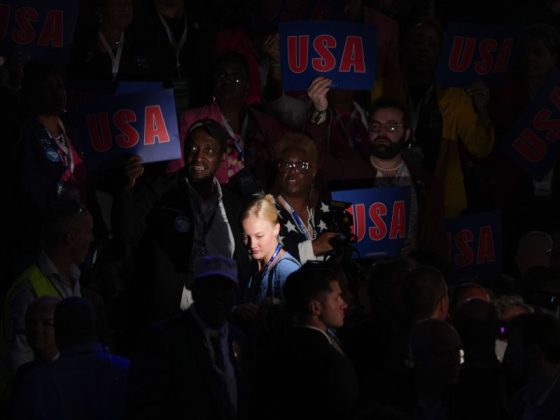In the wake of the recent McDonald’s Instagram hack, where $700,000 was stolen through a fake meme coin promotion, the cryptocurrency community faces renewed scrutiny over its security vulnerabilities.
Marcie Jastrow, a serial entrepreneur and the creator of the Girls Club Token Network, is stepping up with a groundbreaking approach to legitimizing meme coins through intellectual property (IP) ownership and brand distribution.
In an interview with Cryptonews.com, Jastrow said she believes establishing a framework for credibility and security is more important now than ever. Therefore, she suggests transforming meme coins from risky, speculative assets into legitimate, economically viable digital commodities.
Meme Coin Security: Legitimization in a Scandal-Ridden Space
Meme coins have become a cultural phenomenon within the cryptocurrency world. These digital assets have become popular, often inspired by internet memes and primarily driven by community engagement.
However, their very nature—playful, viral, and often lacking formal structure—has also made them fertile ground for scams and fraudulent activities.
The McDonald’s Instagram hack is a prime example, where the allure of quick profits from a new meme coin led to significant financial losses for unsuspecting investors.
For Jastrow, this incident is making a louder call to the critical need for legitimization within the meme coin space. Jastrow explains,
“Legitimizing meme coins through verified ownership and recognized licensing can create a framework that helps distinguish legitimate projects from scams.”
By establishing clear ownership and IP rights for meme coins, Jastrow believes these digital assets can gain the credibility they need to be taken seriously by investors and the broader public.
Legitimizing a meme coin involves more than just claiming ownership; it requires securing the intellectual property associated with the meme, brand, or community identity the coin represents.
This legal recognition provides a foundation for enforcing rights and opens up new avenues for monetization.
When a meme coin is backed by enforceable IP, it transforms from a mere internet trend into a credible, potentially valuable digital asset.
This, in turn, makes it significantly more difficult for bad actors to exploit the coin or deceive investors.
Legitimizing Meme Coins Through IP Ownership
Jastrow’s approach to legitimization is not only about security; it’s also about unlocking new economic opportunities for meme coin communities.
The digital economy is vast and growing, and meme coins have the potential to be a significant part of it—if they can establish themselves as credible assets.
According to Jastrow, the economic benefits of legitimizing meme coins are substantial. Meme coins can expand into merchandising, content creation, and brand partnerships by securing IP rights. Jastrow said,
“With established ownership, these coins can become more than just passing trends—they can be integrated into mainstream markets and recognized as credible assets,”
One of the most promising avenues for monetization is merchandising. When a meme coin has established IP rights, it can be used to create branded merchandise, from apparel to digital products.
This generates revenue and helps build the brand’s identity and presence online and offline.
In addition, content creation linked to the meme coin—whether through videos, games, or other digital media—can further engage the community and attract a broader audience.
Another significant opportunity lies in brand partnerships. As meme coins become more legitimate, they can attract interest from mainstream brands looking to engage with younger, digitally savvy audiences.
Meme coins, with their origins in internet culture and strong community ties, offer a unique way for brands to connect with these demographics. For the meme coin community, such partnerships can increase visibility, credibility, and value.
The Issue of Scaling and Standardizing Legitimization Across the Blockchain Ecosystem
As the meme coin market expands, one of the biggest challenges will be ensuring the legitimization process is scalable and adaptable to different blockchain ecosystems.
The meme coin space is highly diverse, with coins operating across various blockchains, each with its own rules and standards.
To address this, Jastrow is focused on developing interoperable tools and protocols that can be applied universally, regardless of the blockchain on which a meme coin operates.
“Scalability is crucial for the success of any solution aimed at legitimizing meme coins. We need a framework that is flexible enough to accommodate various projects across different blockchains while maintaining consistent standards of ownership and security.”
One approach Jastrow is considering involves creating a universal standard for IP ownership and brand distribution within the meme coin space.
This standard would allow meme coin projects to establish and enforce their rights regardless of the blockchain they operate on, providing consistent credibility and protection across the ecosystem.
Such a standard could also facilitate the creation of interoperable tools that make it easier for meme coin creators to secure their IP and for investors to verify the legitimacy of a project.
This approach could also involve developing new protocols to streamline the establishment of IP rights for digital assets.
For example, Jastrow envisions tools that could automate the registration and verification of IP rights, making it easier for meme coin creators to protect their work and for investors to trust in the legitimacy of a coin.
These tools must be adaptable to different blockchains to ensure that a wide range of projects can use them without compromising security or effectiveness.
Road to Overcoming Community Resistance and Embrace Adoption
While the benefits of legitimization are clear, Jastrow acknowledges that there will be challenges in promoting the adoption of this approach within the meme coin community. One of the biggest obstacles is skepticism.
The meme coin community, known for its anti-establishment ethos and resistance to regulation, may be wary of any initiative that appears to impose structure or control on a space that has thrived on creativity and freedom.
“Skepticism is probably the biggest challenge,” Jastrow admits.
Overcoming this skepticism will require a careful balance of communication, education, and community engagement.
“Many in the meme coin community are wary of anything that feels like regulation or centralization, afraid that it could stifle the creativity and freedom that define meme coins.”
Jastrow is focused on demonstrating the tangible benefits of IP ownership and security, showing how these measures can protect the interests of creators and investors without stifling the creativity that makes meme coins unique.
This could involve case studies and real-world examples that illustrate how legitimization has enhanced the value and security of specific meme coins.
Community engagement will also be crucial. Jastrow believes that by involving the meme coin community in developing these standards and tools, she can build trust and ensure that the solutions meet the needs and expectations of the people they are designed to protect.
This could involve open forums, workshops, and collaborative projects that allow community members to have a say in implementing legitimization.
The Future of Meme Coins: A Path to Credibility and Growth
Looking to the future, Jastrow is optimistic about the potential for meme coins to become powerful economic drivers within the broader cryptocurrency ecosystem.
However, she emphasizes that their success will depend on the industry’s ability to address the space’s security and legitimization challenges.
As the meme coin market matures, Jastrow expects to see a shift from the current “Wild West” environment to a more structured and credible landscape. Jastrow notes that,
“The future of meme coins is incredibly promising, but their long-term success hinges on security and legitimization.”
She believes that as the space evolves, the most successful meme coins will be those that have established clear ownership and strong community trust.
These factors will protect the coins’ value and help them gain acceptance among mainstream investors and audiences.
About Marcie Jastrow
Marcie Jastrow is a visionary production executive and two-time Emmy Award winner whose career spans traditional and digital media. Her work has touched blockbuster films like Avatar, Hugo, Life of Pi, and The Revenant.
As a leader at the intersection of technology and content, Jastrow pioneered partnerships with giants like Netflix, Amazon, Disney, and Fox, helping drive the entertainment industry’s analog-to-digital transformation. Marcie has built her reputation as a creative force, fostering dynamic partnerships that shape the future of entertainment. She is known for her innovative approach to IP and remote collaboration.
Recently, Jastrow has brought her expertise to the world of Web3 and cryptocurrency, advising on projects like Shiba Inu, #GirlsClub, and other initiatives within the blockchain and memecoin ecosystems.
Leveraging her deep experience in technology, media, and IP management, Marcie is at the forefront of efforts to legitimize and secure digital assets for mass adoption. Her dedication to innovation and ability to navigate complex, cutting-edge platforms have made her a sought-after leader.
The post McDonald’s Instagram Hack: Marcie Jastrow on Securing Meme Coins with IP Ownership appeared first on Cryptonews.


